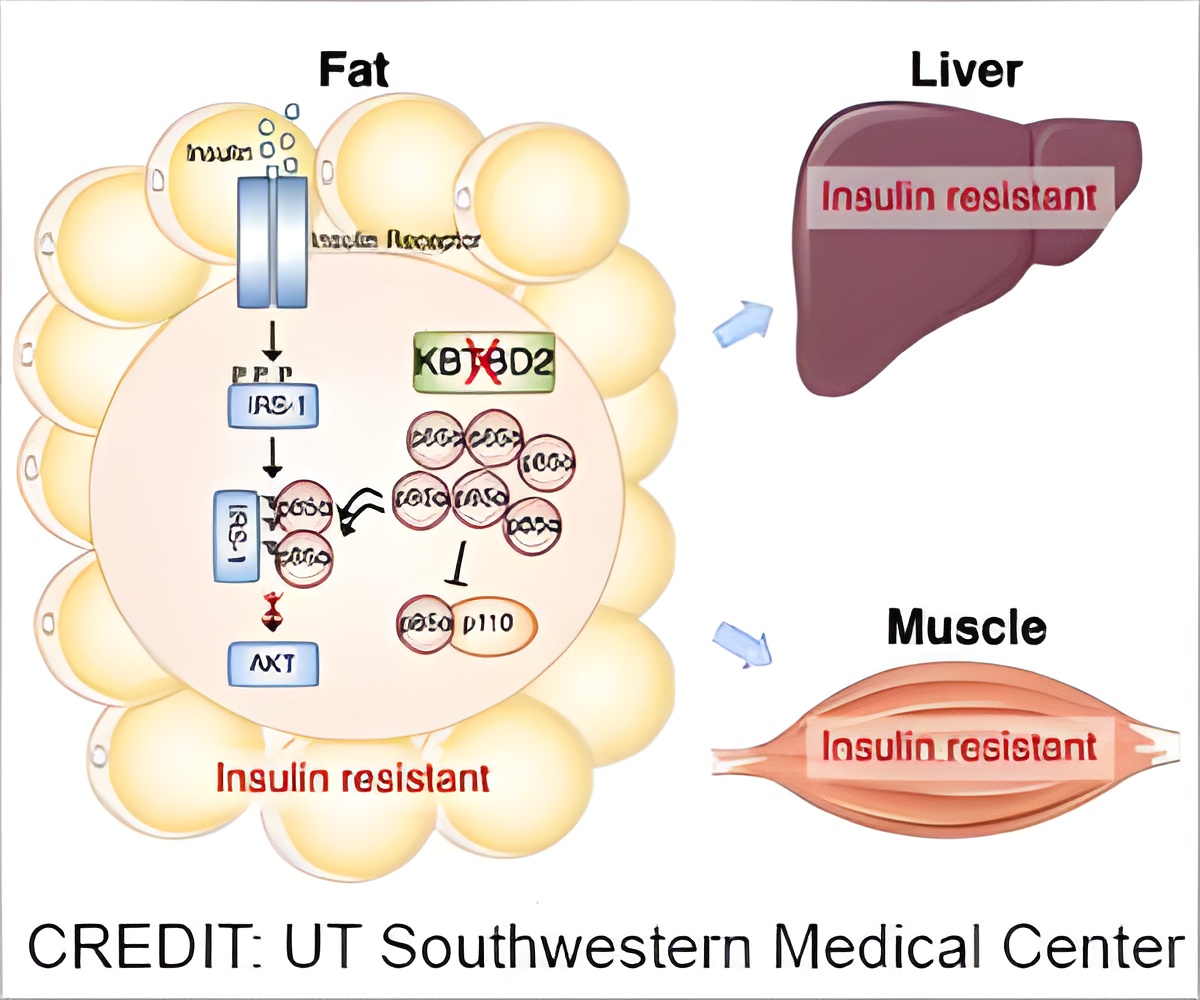Deleting a key gene in the fat in mice resulted in insulin resistance of tissues. It also resulted in small size of the mice. Studying the gene could shed light on Type 2 diabetes.

‘Deletion of KBTBD2 gene in the fat of mice results in insulin resistance. High blood sugar,small size was also observed in mice. Studying KBTBD2 could offer a great insight in to type-2 diabetes and insulin resistant disorders.’
Read More..




Beutler is a regental professor and director of the Center for the Genetics of Host Defense. Zhang is an assistant professor of internal medicine who also has an appointment in the center.Read More..
Sure enough, tests showed that these animals had extremely high blood sugar, severe insulin resistance, and high insulin levels that peaked at 8 weeks of age and then gradually declined. They also had abnormally low amounts of body fat but had fatty livers.
Transplanting teeny mice with fat tissue from normal mice largely resolved these problems, a sign that KBTBD2 in fat tissue in particular is key to each of them. However, say Beutler and Zhang, it was unclear whether these problems were also rooted in KBTBD2 activity in other insulin-responsive tissues, such as muscle and liver.
To answer this question, the researchers created different mouse mutants in which KBTBD2 was selectively inactivated in the animals' fat, muscle, or liver. Although each of these rodents grew to a normal size - suggesting that this gene acts through other pathways to regulate body growth - only those with KBTBD2 inactivated in fat cells had some other hallmark characteristics of teeny.
These animals had extremely high insulin resistance, although only moderately high blood sugar levels. Although their blood insulin levels were also high, they didn't decline after 8 weeks of age as in teeny mice.
Advertisement
Together, say Beutler and Zhang, the findings confirm that KBTBD2 plays a key role in regulating insulin sensitivity and a variety of other activities through its role in fat. However, they also raise important questions about what this gene does elsewhere in the body.
Advertisement
They also plan to investigate the mechanisms behind why these animals have such extreme insulin resistance, which could have implications for Type 2 diabetes in humans, a disease marked by this characteristic.
"Although we know that insulin resistance is very rarely caused by mutations in the insulin receptor or genes responsible for making other proteins known to participate in glucose uptake, most of it is not understood," says Beutler, a Nobel Laureate. "Getting a better grasp on the function of KBTBD2 could open a completely new window into how insulin sensitivity is regulated."
Beutler, who developed a technology for instantly identifying induced germline mutations that cause phenotypes in mice, received the Nobel Prize in Physiology or Medicine in 2011 for his discovery of an important family of receptors that allow mammals to sense infections when they occur, triggering a powerful inflammatory response. He holds the Raymond and Ellen Willie Distinguished Chair in Cancer Research, in Honor of Laverne and Raymond Willie, Sr.
Source-Eurekalert















